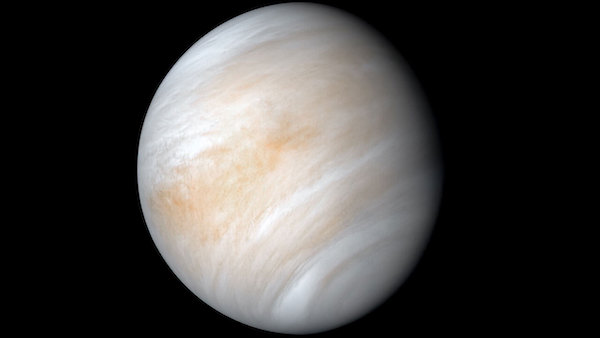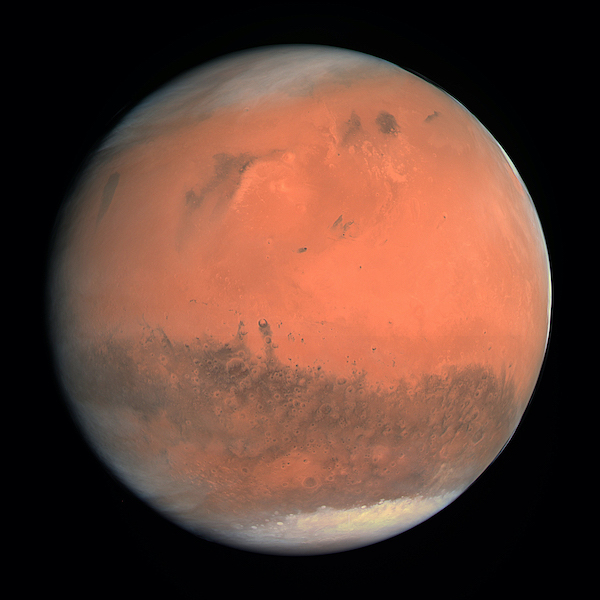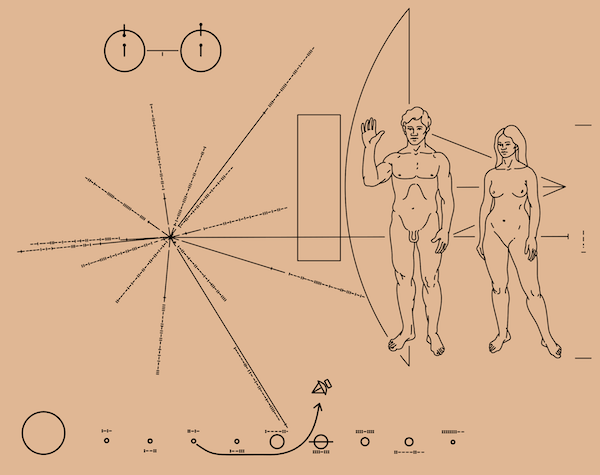Introduction
By now, if you’re a science geek like me, you’ve probably heard the news that Venus shows possible signs of life . Yes, hellish Venus, of all places, might harbor life. This is due to the detection of significant amounts of PH3 (phosphine) in the atmosphere. While the original paper downplayed the possibility that possibility that this phosphine was generated by life, nonetheless, it’s worth understanding the excitement and what it could mean.

Astrobiology
For many, Venus doesn’t seem like a likely candidate for life to exist. The surface temperature is 450° Celsius (842°Fahrenheit—hotter than Mercury!). The atmospheric pressure at the surface is 90 to 95 times greater than on Earth. What’s more, on the surface the atmosphere is overwhelmingly carbon dioxide and nitrogen. But you wouldn’t suffocate. You’d burn and be crushed to death first.
Despite that, the upper atmosphere of Venus is the most Earthlike in the solar system, with even NASA discussing ideas for exploration or colonization .
So what was so interesting about the recent research paper?
In biology, there’s a subfield called astrobiology. I like to think of astrobiologists as science fiction writers with advanced degrees in biology. They consider the possibility of life elsewhere in the universe, what it might be like, and how we can detect it. One of the things they frequently discuss is biosignatures . These are chemical signatures which, if they exist, suggest some form of unusual chemical process that might indicate life. For example, large amounts of free O2 (oxygen) in the atmosphere would be a huge biosignature, as oxygen reacts with just about everything and is quickly removed from the atmosphere. While there are physical processes which can cause oxygen to remain free in the atmosphere, we have so much free oxygen in our atmosphere because life produces it. The detection of large amounts of it in an alient atmosphere would certainly be a great indicator that further investigation is warranted.
Methane is another biosignature gas because its existence is usually associated with life. We’ve been discovering lots of methane on Mars and we don’t know why. Given that the 1976 Viking landers possibly detected metabolism on Mars , the strange discovery of methane on Mars merits closer investigation. We don’t know what’s going on with Mars and life, despite it being very unlikely, could easily explain what we’re observing.

However, it cannot be stressed enough:
If the question is “aliens?”, the answer is almost certainly “no.”
Seriously, stop thinking it’s extraterrestrial life. Every time we’ve gotten our hopes up, they’ve been dashed. And that’s a good thing: it means science is working; we’re not searching for fun, we’re searching for truth.
Phosphine on Venus
The paper is fairly easy to follow, even if it’s aimed at a technical audience.
The authors of the paper were aware that phosphine is known as a powerful biosignature . While phosphine can be produced in energetic reducing atmospheres such as Jupiter and Saturn (and has been detected there), rocky planets such as Earth and Venus shouldn’t have significant phosphine in their atmosphere, though Earth does due to phosphine production by extremophiles. However, we can potentially detect phosphine on exoplanets, so the researchers decided to use Venus to create a benchmark for further studies, but they found ”unexpectedly, our initial observations suggested a detectable amount of Venusian PH3 was present.”
This was a surprise. So the paper focuses on two areas. First, they considered all the possible ways that whatever they detected was not phosphine. After eliminating all sources of confusion they could think of, they concluded that, yup, it was probably phosphine.
The next part of their paper asks the big question: what could cause this?
They considered many, many different ways in which PH3 could be created, but there simply isn’t enough free energy on Venus for that to happen in any significant quantities. For what little PH3 could exist, they considered the lifetime of the molecule and outgassing, again finding an unsustainable amount of PH3. So where does it come from?
Here’s an important section of their research.
Even if confirmed, we emphasize that the detection of PH3 is not robust evidence for life, only for anomalous and unexplained chemistry. There are substantial conceptual problems for the idea of life in Venus’s clouds—the environment is extremely dehydrating as well as hyperacidic. However, we have ruled out many chemical routes to PH3, with the most likely ones falling short by four to eight orders of magnitude To further discriminate between unknown photochemical and/or geological processes as the source of Venusian PH3, or to determine whether there is life in the clouds of Venus, substantial modelling and experimentation will be important. Ultimately, a solution could come from revisiting Venus for in situ measurements or aerosol return.
In other words:
- The PH3 (phosphine) is not strong evidence of life
- There could be previously unknown chemical processes producing it
- It would be difficult for life as we know it to survive in Venus’ upper atmosphere
- We know of no natural (non-living) processes which can produce this phosphine on Venus
There’s actually been plenty of prior discussion about the possibility of life in Venus’ clouds, with Carl Sagan writing about this in the 1960s. Serious research articles on the topic appear regularly and pop-sci articles love to describe scientists pointing out that dark patches in Venusian clouds could be micro-organisms .
Implications
While it’s very unlikely, what does it mean if life is found on Venus? That would depend on its origin. If we found that Venusian life had the same DNA or RNA as Earth life, that would strongly suggest a common origin. The panspermia hypothesis, long laughed at in science, is looking more and more credible all the time, particularly since we find Martian meteorites on Earth. Wouldn’t it be fascinating if life originated on Mars and made its way to both Earth and Venus?
While I love that thought, there’s the more exciting possibility that potential Venusian life shares little, if any, biological similarity to Earth life. If so, that would suggest a separate origin. The implications of that would be staggering.
Currently, we only know of one place in the entire universe where life was created: Earth. If we had two independent creation events in the same solar sytem, this would imply that it’s common enough that the universe should be teeming with life. Absolutely teeming. As our technology improves, it would be easier to detect those biosignatures on the thousands of alien planets we’ve discovered. It would be amazing.

As for intelligent life elsewhere, that’s a different story, but if the universe is teeming with life, that tremendously raises the chance for intelligent life elsewhere.
I can imagine few scientifics endeavors more important than sending new missions to Venus and Mars to investigate one of the most fundamental questions humanity faces: are we alone?
Update: new research indicates that the alleged phosphine detected in Venus’s atmospher is probably sulfur dioxide. Here’s the paper and here’s a news article about it .


